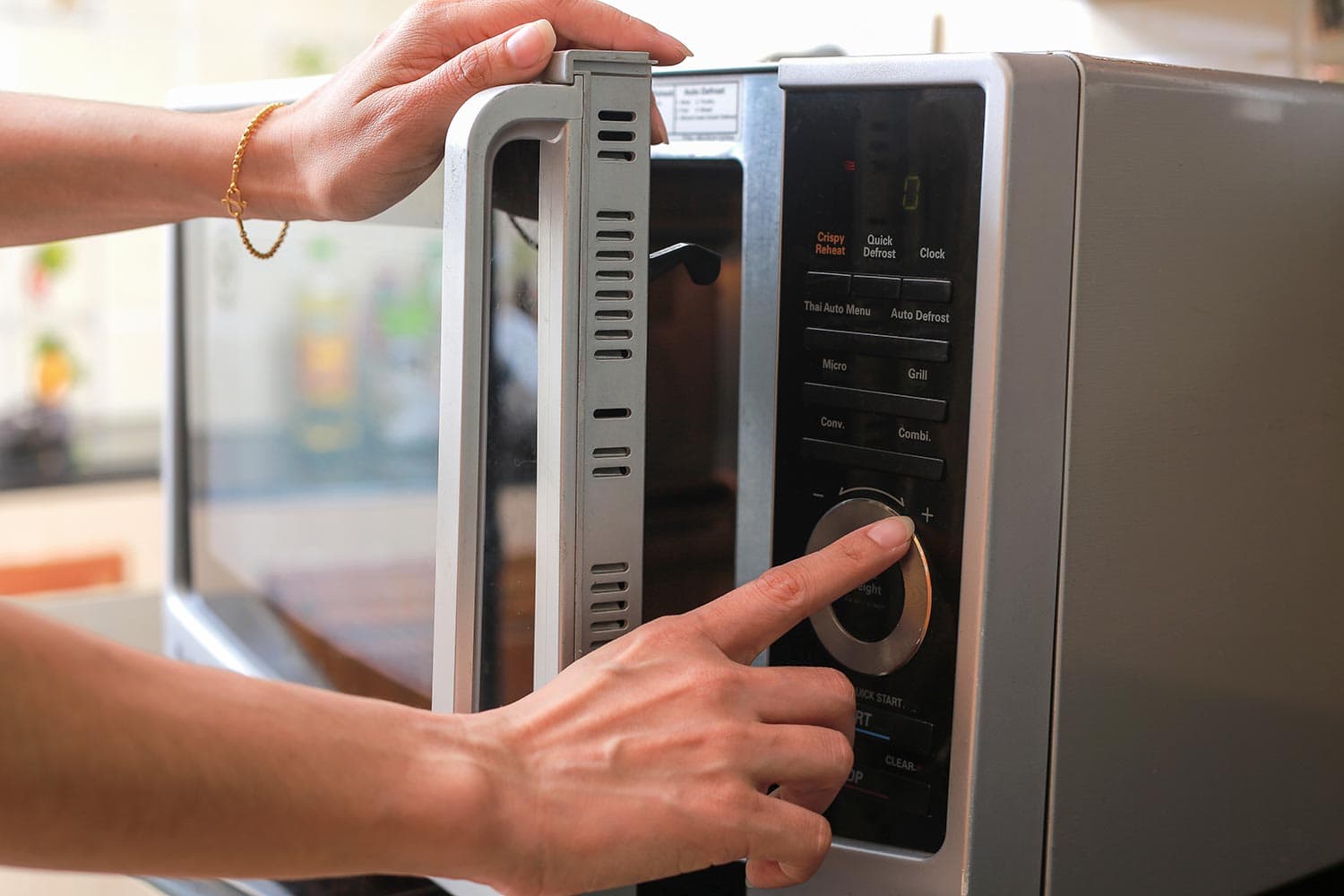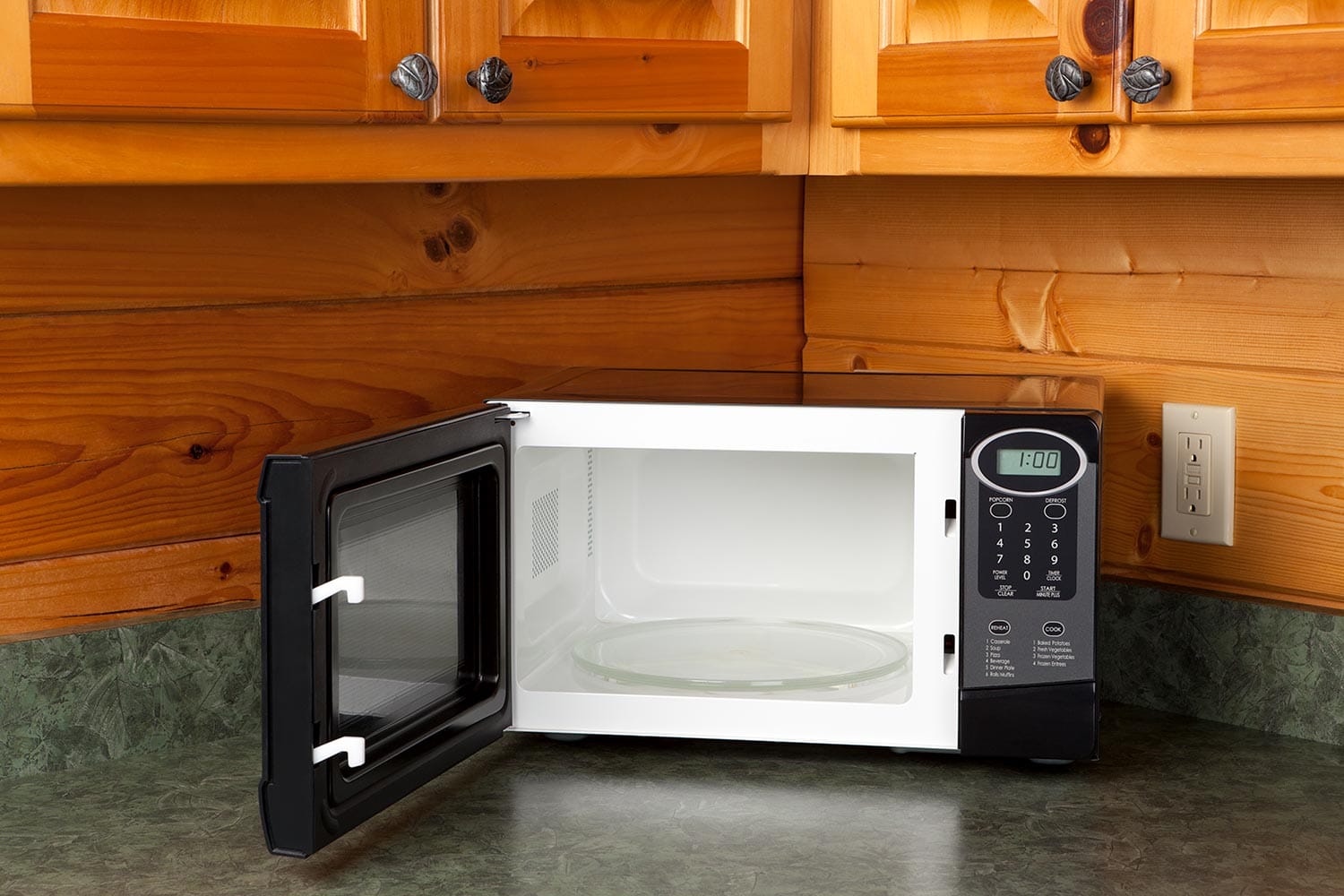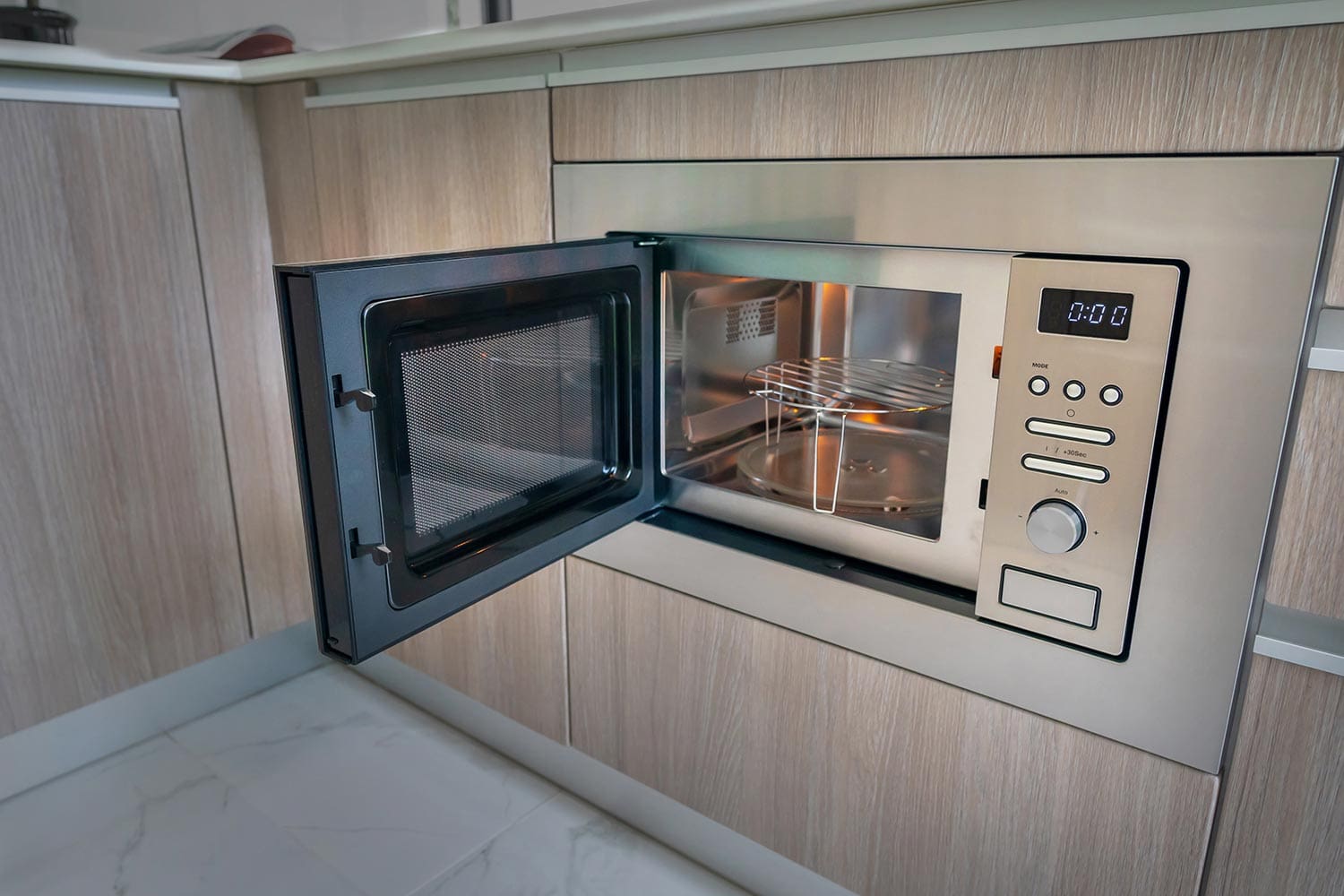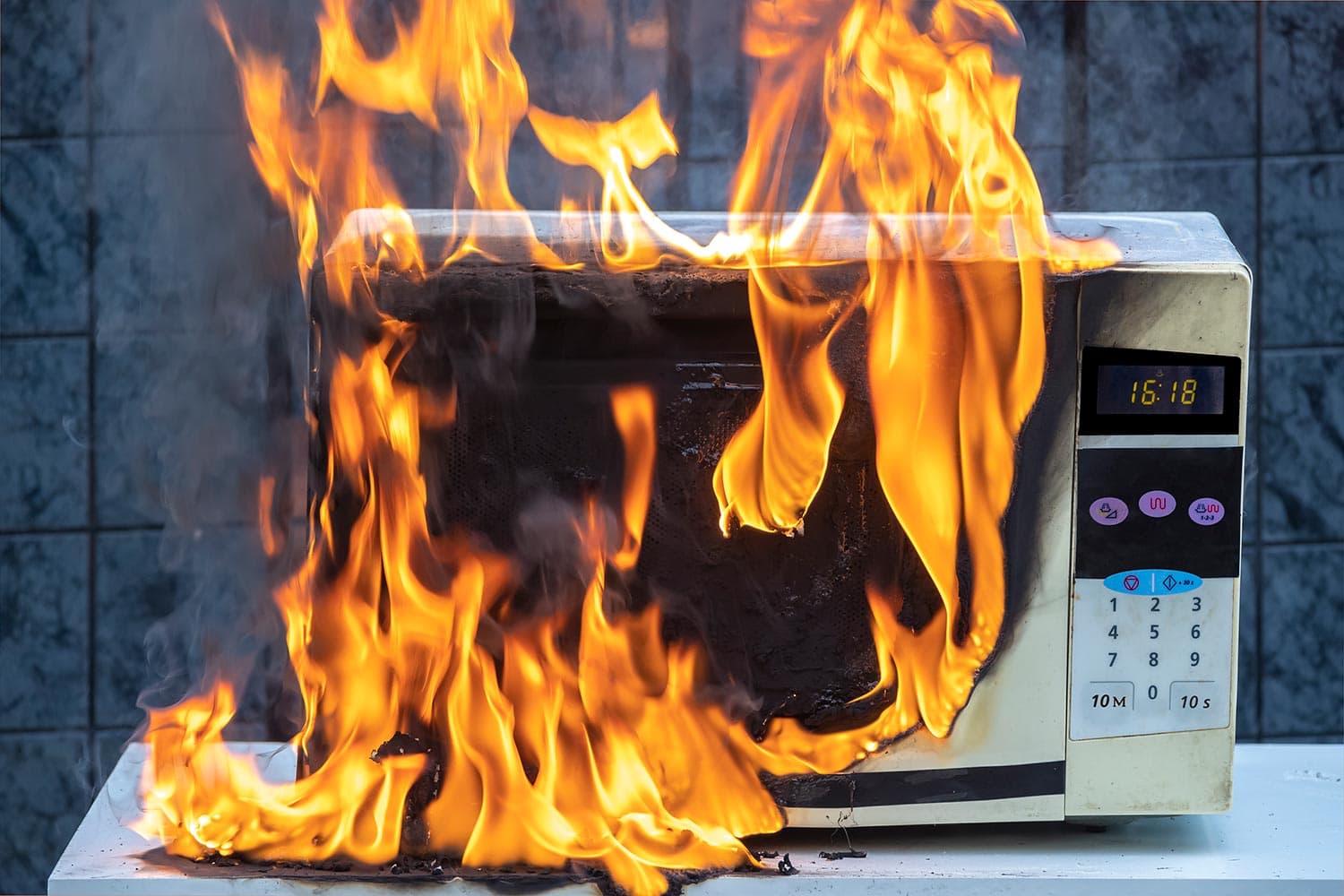Nowadays, modern kitchens seek to maximize available space. This means storing appliances, including microwaves, in varied spaces to keep the kitchen presentable. However, this may come at the expense of the appliance's efficient functioning.
Microwaves need proper ventilation and clearance for them to work efficiently. However, different types of microwave models vary greatly when it comes to how much clearance and ventilation they require. Some might require an external vent installed, while others just need enough space.
These devices tend to generate a lot of heat. So, it makes sense that they require ventilation. And with the help of various experts, we will discuss with you why ventilation is important. So, be sure to continue reading through this article.

Venting Out Microwaves?
Microwaves need ventilation for them to keep working properly. So make sure that the spaces you store them in have enough clearance for ventilation. And while there are some microwaves out there boasting a built-in ventilation system, the majority don't have this feature.
If you don't provide them with enough ventilation, it will compromise their efficiency. Not only that, they could develop a fault, or worse, they become irreversibly damaged.
Additionally, blocked vents can cause serious problems. This could lead to overheating, which in turn, could cause a fire to break out.
Now that you understand why ventilation is important, we will discuss how to ventilate different types of microwaves. Do take note that different models require a specific set of instructions. So, always read through the manual that comes provided with your appliance.
Why Do Microwave Ovens Require Ventilation?
You already know this, but microwave ovens need ventilation to run efficiently and safely in our kitchens. The venting needed though, differs according to the model and design. But all microwave ovens without a built-in system require sufficient external ventilation.

First, we need to know how they generate heat to cook food. And they do that by making use of radiation. Heating food particles and water cause them to vibrate, thereby cooking them.
The air inside the oven expands as food cooks. And this air needs an outlet so that the microwave doesn't overheat. Ensure that there's proper airflow through external ventilation. This is to ensure that the exhaust doesn't stay inside your home.
Finally, the instruction manual included would detail their minimum requirements. Follow these guidelines to ensure proper ventilation and clearance.
Check out this microwave oven on Amazon.
Why Do Countertop Microwaves Need Ventilation?

We know that microwaves require ventilation. Countertop microwaves, however, don't require external ventilation.
Unlike microwave ovens, they're designed to sit atop your kitchen countertop. They have vents on top, on the side, and in the rear so make sure there's no obstruction nearby.
As a friendly reminder, place them where children and pets don't have easy access. They tend to become hot so exercise proper caution.
Check out this countertop microwave on Amazon.
Does An Over The Range Microwave Require Ventilation?

When it comes to OTR (Over The Range) microwaves, they boast an internal ventilation system. This means that adding external ventilation is optional.
These are built-in microwaves that are installed and fit over a cooktop. They are known to sit against the kitchen wall, sometimes tucked into a cabinet. And, their carbon footprint is extremely limited compared to other microwaves.
OTR microwaves also have a built-in ventilation system and internal exhaust fans that help optimize proper airflow. To top it off, they can be connected to an exterior vent to allow smoke, steam, and odor to be released outside of the house.
With this series of designs, they boast the best ventilation system by far from any other microwave. As such, they don't require a lot to maximize their efficiency.
Check out this over the range microwave on Amazon.
Do Convection Microwaves Need Ventilation?
The short answer is no. That reason is that these microwaves use a fan for air circulation within the appliance.
Just like OTR microwaves, convection microwaves use an internal fan to help cook food faster and introduce proper airflow. However, they instead need enough clearance. Doing so, they don't require venting.
However, please be advised that the place you reside in might beg to differ. So, it's important to first understand the regulations before concluding.
Check out this convection microwave on Amazon.
Effectiveness Of Ventilation Systems
When microwaves are connected to an external vent, the exhaust is directed outside. This means that your kitchen is free from smoke, steam, and odor that come with using a microwave.
Meanwhile, an internal vent filters that same exhaust through a filter made of materials like charcoal. This helps eliminate the smells and small particles. However, they circulate the air back into the kitchen.
Both systems have their fair shares of advantages and disadvantages. As such, understand what works best for you and what conforms to the regulations of where you live.
Installing external vents into your home requires a lot of work. As such, they need to conform to the construction standards while meeting the standards set by the manufacturer.
For microwaves with an internal ventilation system, they don't need to worry about those at all. You can set them anywhere where there's enough clearance for them to ventilate. Unlike external vents, they are completely flexible and cheap to work with.
The only thing you need to worry about is their filters. Their efficiency will deteriorate over time if you don't clean and replace them regularly.
If you choose to own a microwave with an internal circulation system, we recommend using aluminum filters. You can clean and reuse them, unlike charcoal filters, making them last longer.
How Much Space Does A Microwave Need?
It depends on the model and design of the microwave that you own. Typically, the instruction manual will tell you how much space is needed for their respective product.
Generally, it is agreed that leaving three inches on all four sides of the microwave is the minimum requirement. This will provide them with enough clearance to allow proper airflow and avoid blocking vents.
If you plan on keeping a microwave inside the cabinet, don't push it into the wall. Leave enough space on all four sides. Otherwise, this would cause machine failure due to overheating.
Is It Safe To Enclose A Microwave?

Unless it's a built-in microwave, most experts would agree that it's best not to enclose a microwave. Besides for storage when not in use, most microwaves should be in an open area.
Although it's possible with adequate ventilation and space, it's best not to try. Even with adequate safety precautions, most people would agree that it would significantly damage both the microwave and the cabinet. And, it becomes a fire hazard.
In case of such emergencies, be ready to call the local fire department in the area where you live. And if possible, keep a fire extinguisher around as a safety precaution.
Dangers Of Poor Ventilation
As mentioned throughout this article, poor ventilation carries significant risks and dangers. And microwaves are not the only ones affected by this but so is your home.
Without proper ventilation, you run the risk of overheating your machine. This would cause it to deteriorate over time and lessen its performance. But the biggest issue is that it can lead to a house fire.

Even if you leave your microwave with enough space, if you were to place something over its vent, then that's more than enough to cause an accident. People tend to overlook this fact and would sometimes place a cover over their microwave, thereby blocking the vents and preventing proper airflow from happening.
Another cause of concern is when there's not enough clearance. Forcing your microwave into a tight space would greatly destroy its surroundings. More often than not, it would lead to scorch marks on your walls and shelves.
Poor ventilation would also lead to inhaling the fumes released by a microwave during use. While there are many sources of indoor air pollution, microwaves are the primary culprits.
They release volatile organic compounds into the air, fine particulate matter, and carbon dioxide. These greatly reduce the indoor air quality we breathe, which in turn, greatly affects our overall health.
In Summary
Proper ventilation is key to optimizing your microwave's efficiency. Without it, you run the risk of deteriorating your machine until it no longer functions or worse, becomes a hazard at home.
Additionally, keeping it in a place where it's free from obstructions will help prevent accidents like burns and even house fires. So, make sure that they are out of reach from children, pets, and the elderly. And be ready to call a professional at any given time in case of an accident.
If you enjoy reading this article, we implore you to check the links below. We assure you that not only will they give you more information on the subject matter, but they will answer questions that you might not have thought otherwise.




